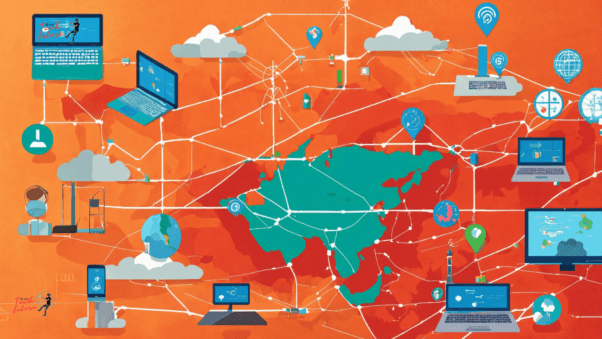Edge computing stands at the forefront of technological innovation, providing new perspectives to address the limitations of traditional centralized cloud computing models. In this conversation, we examine ideal situations where leveraging edge computing arrangements can deliver unparalleled benefits.
Introduction to Edge Computing
In recent years, the proliferation of connected devices and the dramatic increase in data generated at the network edge have highlighted the shortcomings of traditional cloud computing models. Edge computing addresses these limitations by facilitating data processing and investigation closer to the point of data generation. This approach minimizes hibernation and enhances network bandwidth usage.
Learn About Edge Computing Solutions

Definitions and Concepts
Edge computing involves deploying computing resources, including servers, storage, and networking equipment, close to data sources, often at the edge of the network. This decentralized process allows for faster data processing and immediate direction, improving overall application efficiency and readiness.
How Edge Computing Differs from Cloud Computing
Cloud computing relies on centralized data centers for data processing and storage, while edge computing disperses computing tasks among edge devices and sensor networks. This decentralized engineering reduces data transfer times and further improves responsiveness, making it ideal for inertia-sensitive and bandwidth-constrained environments.
Advantages of Edge Computing Solutions
Edge computing offers several advantages over traditional cloud-based architectures:
By processing data locally at the edge, edge computing greatly reduces inertia, facilitating continuous interactions and applications that require instant response, such as self-driving cars and industrial automation.
Improved Data Privacy and Security
Edge computing enables organizations to process sensitive data locally without transmitting it to a centralized cloud server. This reduces the risk of data breaches and ensures compliance with security regulations.
Bandwidth Optimization
By filtering and aggregating data at the edge before transmitting to the cloud, edge computing can alleviate network congestion and reduce bandwidth usage. This can save costs and upgrade general network performance.
Enhanced Reliability and Availability
The edge computing architecture delivers computing tasks between edge centers, ensuring significant repeatability and adaptability to internal failures. This enhances the reliability and availability of essential applications and management.
Ideal Scenarios For Using Edge Computing Solutions
Internet of Things (IoT) Applications
Edge computing is particularly suitable for IoT deployments, where various sensors and devices create important data that needs to be continuously processed and inspected.
Organizations can reduce idle time and improve responsiveness for applications such as large urban areas, industrial automation, and remote asset monitoring by deploying edge computing centers near IoT devices.
Real-time Analysis and Processing
Applications that require instant data insights and decisions, such as predictive maintenance, fraud detection, and video analytics, can benefit from edge computing solutions. Processing data at the edge enables organizations to derive actionable insights incrementally, helping to generate brief responses to changing conditions and occasions.
Remote Locations and Edge Environments
In remote or harsh environments where connectivity to centralized data centers is limited or problematic, edge computing provides a suitable solution for proximity data processing and storage. Industries such as energy, mining, and agribusiness can use edge computing to support operations in challenging environments without sacrificing performance or reliability.
Mission-Critical Systems and Applications

For mission-critical systems that require high availability and low idle rates, such as autonomous vehicles, healthcare monitoring, and financial trading platforms, edge computing provides a powerful and versatile infrastructure. By distributing computing tasks across geographically dispersed edge centers, organizations can guarantee uninterrupted help delivery and reduce the risk of single points of failure.
Augmented reality (AR) and virtual reality (VR)
AR and VR applications rely on real-time rendering and high-fidelity graphics, which require low inertia and high bandwidth. Edge computing enables the processing and rendering of AR/VR content closer to the end client, minimizing inactivity and enhancing vivid experiences. This is particularly useful for applications such as remote training, virtual collaboration, and interactive gaming.
Challenges and Considerations
While edge computing offers compelling benefits, organizations must address several challenges and considerations:
Infrastructure and deployment complexity
Deploying and managing edge computing infrastructure in the right environment can be complex and asset-intensive, requiring careful planning and coordination.
Data Management and Governance
Managing data consistency, integrity and security across edge centers poses significant difficulties and requires strong data support and management arrangements and improvements.
Security Question
Protecting edge computing environments from cyber threats, unauthorized access, and data breaches requires implementing strong security controls and encryption components at the edge.
Future Outlook and Trends
As edge computing continues to evolve, we can expect to see advances in edge applications, edge AI and machine learning, and edge-to-cloud integration. The combination of edge computing with emerging technologies such as 5G, artificial intelligence, and blockchain will further drive advancement and acceptance among enterprises.
Conclusion
In conclusion, ideal scenarios for using edge computing solutions span many applications and industries where low latency, high availability, and real-time processing are critical. Equipped with the power of edge computing, associations can open new doors for progress, proficiency, and seriousness in an undeniably connected and data-driven world.
FAQ (Frequently Asked Questions)
What are some examples of edge computing devices?
Edge computing devices include routers, gateways, micro data centers, and edge servers, as well as IoT devices such as sensors, cameras, and drones.
How does edge computing differ from fog computing?
While edge computing and fog computing both involve processing information closer to the source, edge computing typically implies processing information at the edge of an organization, while fog computing relaxes this idea to incorporate an intermediate fog center between the edge and the cloud.
What are the important considerations when deploying edge computing solutions?
Key considerations for sending edge computing arrangements include underlying adaptability, data security and privacy, network connectivity, dormancy requirements, and blending with existing IT frameworks.
How does edge computing benefit IoT deployments?
Edge computing reduces sleep and bandwidth usage in IoT deployments by processing data locally at the edge, enabling continuous inspection, faster navigation, and further developing the responsiveness of IoT applications.
What role does 5G play in enabling edge computing?
5G networks provide the fast, low-inactivity connectivity needed for edge computing applications, enabling stable communications between edge devices and centralized cloud organizations.
